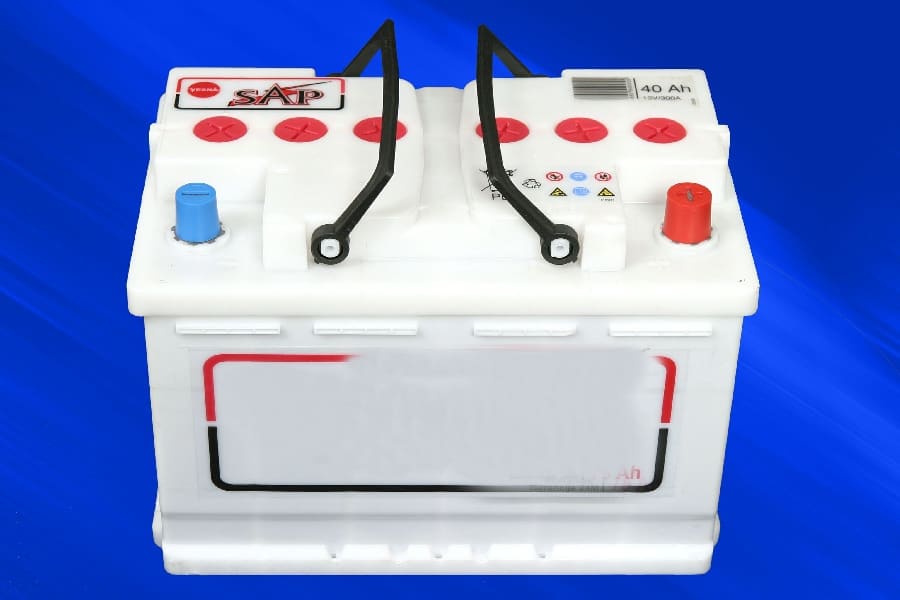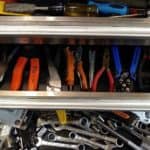How to choose the right size batteries for your trolling motor can be a difficult question. But the answer can be simplified if you know how you’re going to use your electric trolling motor. The most demanding use of an electric trolling motor is trolling all day.
With a few of the variables, you can plug in the information into a formula found on the Minn Kota website (Minnkotamotors.com, 2019) and get a good idea of what size batteries you need.
Amp hours= (hours used*draw in amps)/.85
With this formula, you can determine the total amount of battery amp hours needed for your day of fishing. To prevent battery damage, you will want to double the required amp hours to size your battery properly.
Battery amp hours = total amp hours * 2
What are amp hours?
Amp-hours are a way to measure the total capacity of a battery. Because 20 hours is a manufacturer standard, I like to always refer to that. If you can draw 5 amps from a battery for 20 hours, that is a 100 amp hour battery (5*20=100) (Eastpenn-deka.com, 2019). That is 100% of the battery capacity, drawing that amount will significantly reduce the life of your battery so you should only draw a maximum of 50 amps from a 100 amp hour battery.
How do I determine how many amp hours I need for my electric trolling motor?
There are a few different ways to determine the number of amp-hours that you will need for your trolling motor. I start by going to the manufacturer’s website and looking up what is the maximum draw for my trolling motor.
The maximum draw of my 80lb thrust motor is 56 amps per hour. I plan on running it at 50% or less most of the day. So, 28 amps per hour will suit my needs.
Normally in the back of your manual, you will also find a table that will contain this information. Currently, more manufacturers are going away from these detailed tables and putting the information online only.
How many hours of run time do I need for my electric trolling motor?
Everybody has a certain amount of time that they like to fish. My perfect fishing trip is about 6 hours on the water. So, I use 6 amp-hours when I am calculating how many total amp hours I need for a day of fishing.
But, you should consider that 6 hours of run time will be significantly higher than what you need. In most cases, you will be motoring from one location to another and not trolling the entire time.
If you think about your whole day, it takes you 30 minutes to launch your boat. When you are done fishing depending on your catch, it can take you 30 minutes or more to clean your fish.
After all that you have to land your boat which can take you another 30 minutes. Next, you put away your poles and straighten them up a bit. So a 6-hour fishing trip is 8 hours plus the drive time.
My favorite lake is 2 hours away from my house, which makes for a 12-hour day. I am not sure how I would fish for much more than 6 hours and have a good time with all the support work that goes along with that.
How do I verify my amps used on my electric trolling motor?
The tables provided in the manufacturer’s information are usually higher than the actual performance. I believe that might be for safety in electrical wiring and to reduce their liability.
To be sure of where I am at with my electrical needs, I like to set the motor on 50% and use a clamp-on ammeter as close to the motor as I can get on the positive supply wire. After I take that reading and write it down on a piece of paper, I will increase the speed to 100% for 30 seconds and take an additional reading to find out what the maximum draw is.
With my motor, both readings came in roughly 5% under what the manufacturer specified with full batteries. You must perform this test while using the motor in real-world situations, in the water, because you need the pressure on the motor for it to draw maximum power.
How can I reduce the number of amp hours I need for my electric trolling motor during my fishing trip?
Running out of battery power during your fishing trip can be problematic. If you discharge your batteries past the 50% point you can damage them, which I have done many times. But you still need to use your trolling motor to get a nice smooth speed, and GPS navigation.
What I will do is take my gas trolling motor and run it at the lowest speed possible. If you have a securing lever, you can set your gas trolling motor to go in a straight line. Then, use your electric trolling motor on the lowest setting possible to still maintain GPS steering control.
Using a bungee cord is an option If you do not have a lever to secure your trolling motor. Attach the bungee cord to the boat on both sides of the motor and loop it around the handle. Make sure you can still push the handle in case you need to without disconnecting the cord.
I have been able to run my electric motor in high current for 8 hours by running my gas motor. There are places on big Rivers, in my case the Columbia River, where more power is required to troll consistently. 4 hours is just not going to get me the time on the water needed to produce fish.
Doing the math:
So now that we have put this all together let’s take a look at what I need for batteries to run my boat effectively for a fishing trip.
Amp hours = (hours*draw)/.85
Ah = ( 6 * 28 )/.85
Ah = 197.6
50% 395.2= 197.6 * 2
The total power in amp-hours that I would need for a 6 hour fishing trip is 400 amp-hours. I currently have 250 amp hours on my A battery bank. If I rework that formula my 250 amp hour battery bank will give me 3.79 hours of fishing time.
3.79hrs = (250ah*.85)/28 draw at 50%
How do I use two battery banks to extend my fishing time?
Earlier in the article, I noted that 6 hours would be a little high because of time motoring from location to location on the water. However, 250 amp-hours would still leave me short on power so I have an additional battery bank.
My B battery bank is 100 amp hours and wired to my main motors charging system. When I am running my main motor I am recharging my B battery bank while heading to a new location.
Normally during the day, I start by running my B battery bank for an hour. I then switch over to the A battery bank until they are used to 50% capacity.
After motoring around the lake I have added a charge to my B battery bank. So, I can switch back to my B battery bank for some additional fishing time.
Click here to read our review of Trolling Motor Batteries
Conclusion:
You can use this basic formula to plug in the different variables and figure out either how much battery you need. Also, you can estimate how long at what speed you can run the batteries you have without damaging them.
Always make an effort to reduce the amount of battery power used. You can do this by running your gas trolling motor when you need to run your electric motor above 40% power.
Adding a main motor recharging unit can extend your fishing day. In my case, I wish I could have four more batteries, but in any boat, space is limited.
When the lifespan of my main batteries is used up, I will be checking the budget to purchase drop-in lithium batteries. I can use the batteries well past 50% without damaging them, but bring your money for those, LOL.
References:
Minnkotamotors.com. (2019). [online] Available at: https://www.minnkotamotors.com/sites/minnkotamotors_site/files/formulas.pdf [Accessed 26 May 2019].
Eastpenn-deka.com. (2019). [online] Available at: http://www.eastpenn-deka.com/assets/base/0139.pdf (page 2) [Accessed 26 May 2019].




